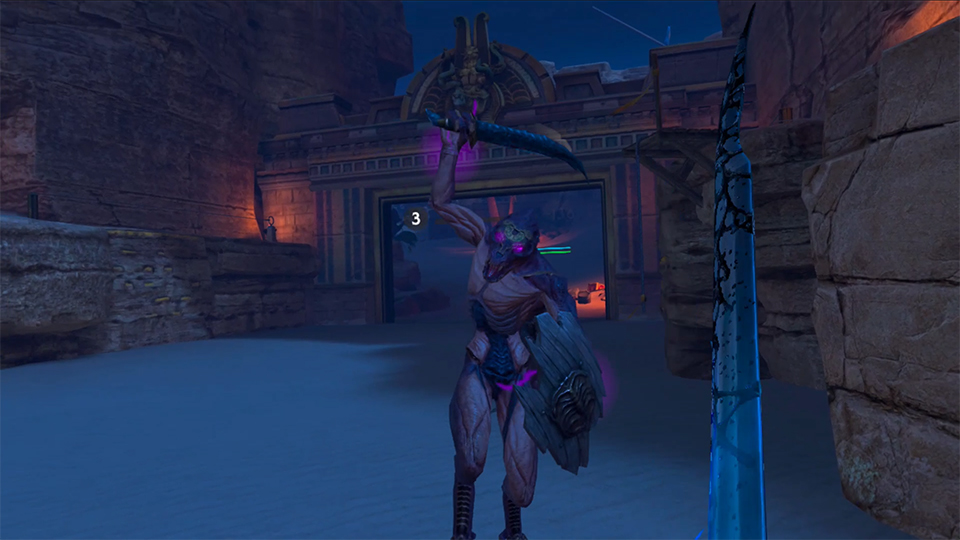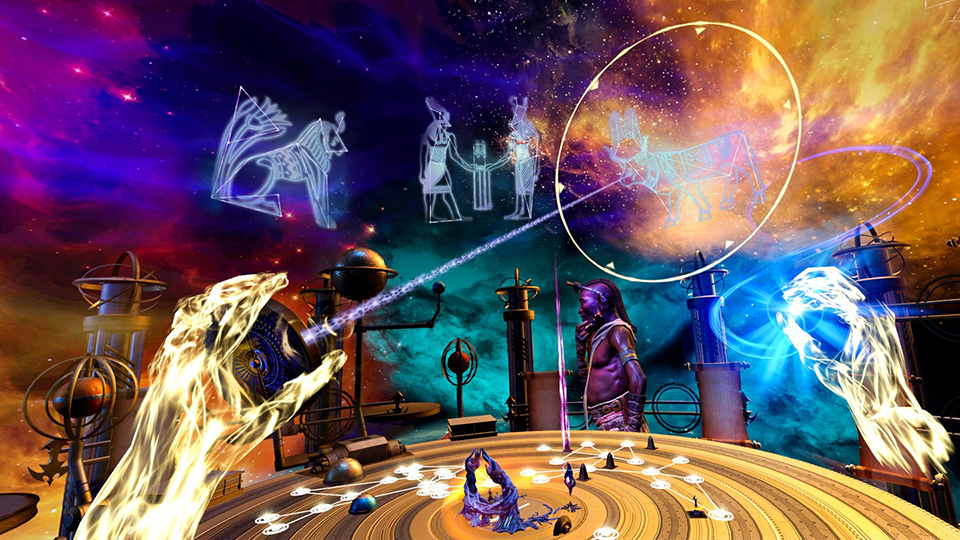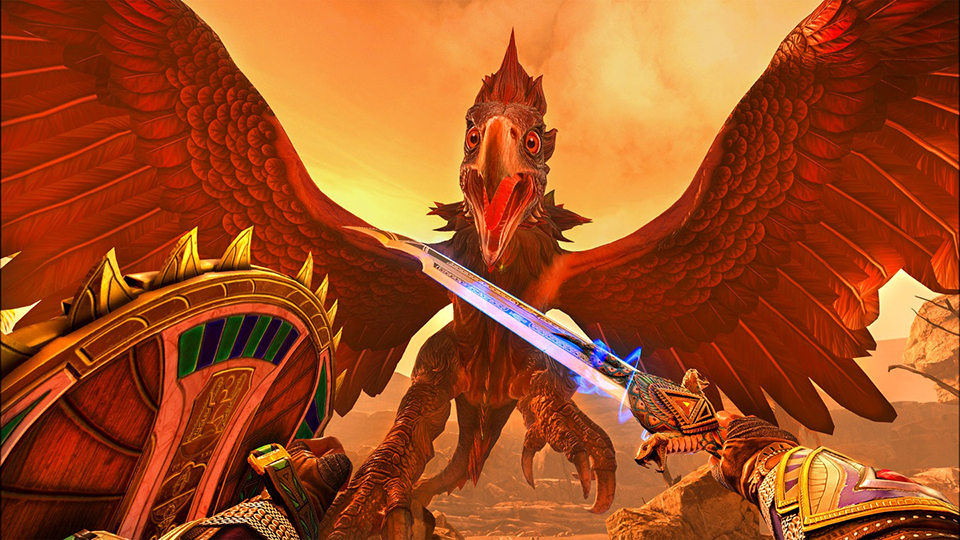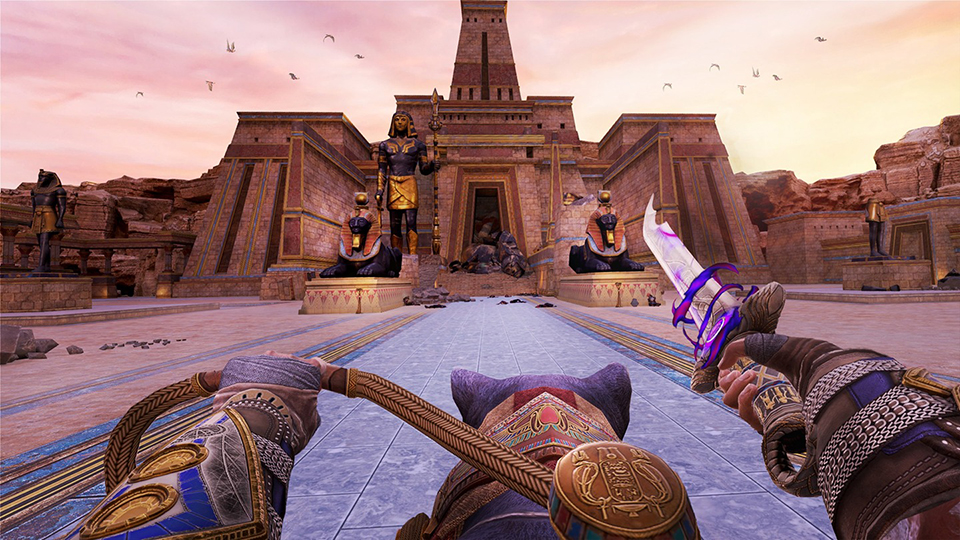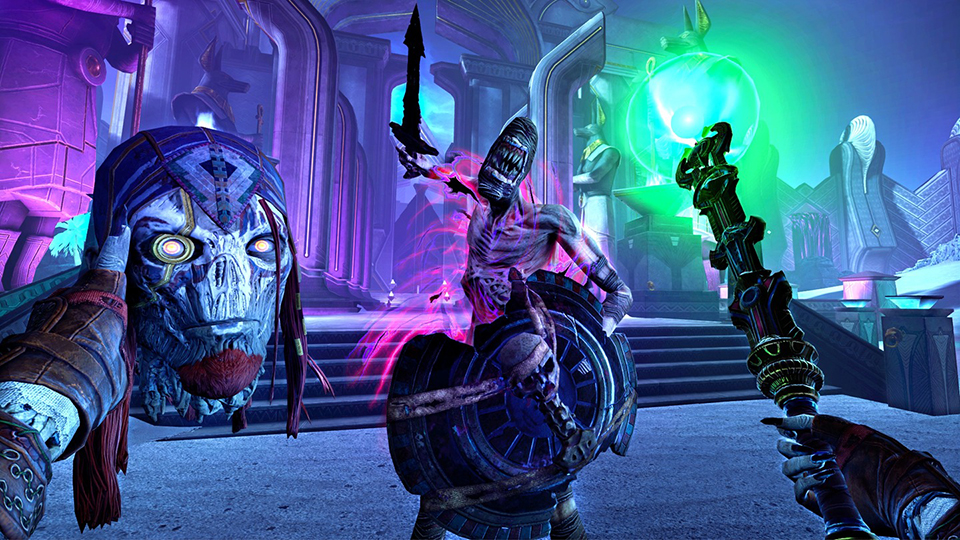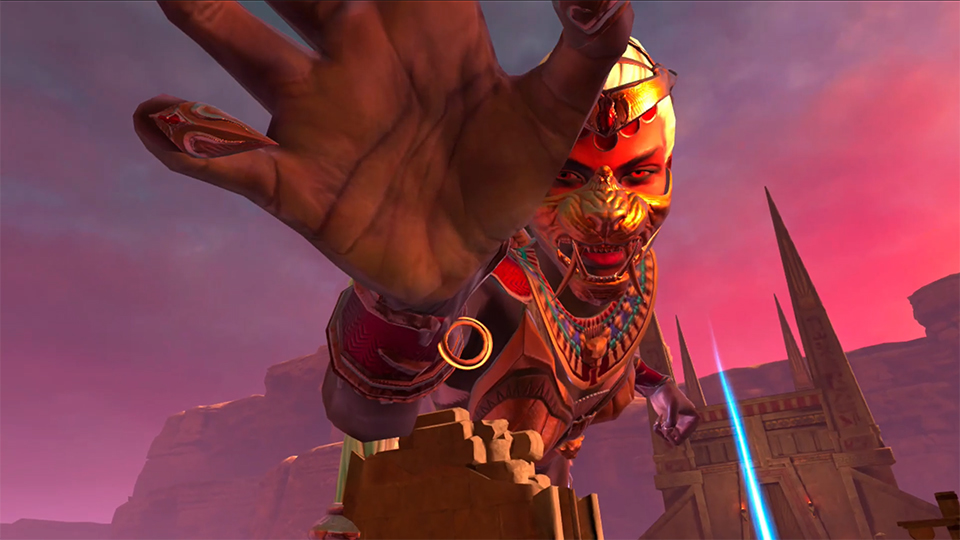Developer / Publisher – Sanzaru Games / Oculus Studios
Price – US $49.99 / CAN 64.99 / EU €49.99 / UK £39.99
Release Date – December 15th, 2023
Input – 2 x Motion Controllers
Play Area – Seated, Standing
Store Links – Meta
Reviewed on – Quest 3
I’m gonna try and keep this review on the shorter side and not dive as deep into the mechanics as I tend too as there is honestly so much in Asgards Wrath 2 to talk about that covering it all would make for an insanely long video. So, for those that haven’t played the 1st one (and I’m sure that’s many of you), you can catch up thanks to an optional “previously on Asgard’s Wrath” cinematic which summarizes the events of the 1st game and explains why you appear to be stuck in a Norse tavern. Naturally, you escape from your makeshift prison and begin your quest to seek out revenge against the trickster god Loki as you traverse locations from around the world, inhabiting lesser beings and meeting other gods from different mythos.
The word I keep coming back to when it comes to AW2 is ‘grandiose’. This is easily the biggest game to ever release on the Quest platform and it’s quite clear that the developers were trying to bring the AAA when it comes to scope and scale. It’s a semi-open world affair that offers up a lengthy main story (apparently 60 hours worth of content) and plenty of bonus missions and side quests should you want for that sort of thing. It very much reminds me of the Assassins Creed or Red Dead series when it comes to basic structure in that you are relatively free to do what you want but can head back to the main story whenever you feel like it…more or less. As your powers, weapons & companions are tied directly to the story, the more you focus your efforts there, the more of the game becomes available for you to play and while I appreciate just how much game is here, I quickly began to ignore anything besides the main story.
The combat is visceral and fairly in-depth, bringing back the parry and attack system from the 1st game, but making it much more organic by letting you move freely during these sections. Enemies have a variety of attacks, some that can be blocked or parried while others need to be evaded while you, inhabiting a mortal, have a few weapons and powers at your own disposal. Proper parries may reveal weak spots that cause much more damage when you whack at them and overall, it’s a solid combat system that only gets more involved the longer you play thanks to additional abilities, companions and the various foes who mix up attack strategies. The thing is, as much I appreciate all the fighting, after around the 8-hour mark, I ended up dumbing down the difficulty to story mode just so I could breeze through the standard encounters as they began to feel quite samey. I am specifically talking about those regular foes as the mini-boss battles typically added new dynamics thanks to their specific weaknesses and any encounters with actual Gods were always harrowing experiences.
Surprisingly, as much combat as there is to be found here, there is just as much puzzling, if not more and I am pleasantly surprised by just how much variety there is in all these obstacles. Puzzles can be a simple as just figuring out how to climb, wall walk, pull a lever or yank on a chain but as the game progresses, they get more and more complex, requiring you to use and chain together not just your abilities but those of your companions as well. Don’t forget that you are a god and there are sections where you can assume your godly form, looking upon the environment your host finds him or herself in, allowing you to move huge sections of the stage and adding yet another layer to all the puzzling in the game. Every time a new mechanic is introduced, you can bet your ass that it’s going to be needed to solve a plethora of puzzles down the line and I appreciated just how little hand holding there was during some of these sections though I need to say, despite the game constantly trying new things, the game loop of exploration, combat, puzzles and god puzzles did get a little tiresome at times. I think it’s just the nature of the beast when it comes to games promising this much content and I will give the devs credit here as they do a great job of constantly adding new elements to contend with, it can just feel a little formulaic at times or during longer play sessions.
If it’s not puzzles or combat, it’s exploration, crafting, upgrading and delving into the various other elements that make this feel like a fully realized semi-open world game and just like it’s flat counterparts, if I could avoid any of these elements, I did. Almost every system feels quite robust, minus the crafting, giving plenty of other things to do but unless it was a necessity, I tended to ignore them. You can collect random items throughout your travels which can be traded or used at vendors though the only time I ever used these were when I was in desperate need of health or revival potions after a failed encounter. Exploration will of course yield more loot though on more than a few occasions, entering a random cave brought me to an identical cave I had just visited, hampering immersion and with these smaller areas typically not having great loot in the first place, I soon stopped visiting them altogether. There’s a decent perk system at play that lets you spend points gained from experience (or specific items) that unlock or upgrade yours or your companions’ abilities. Every time you encounter something new, an entry is added to your codex should you wish to read more about said foe, friend or location. In the menu, you can customize your minions with items and purchased armor, view all your active quests, check out the mini-maps and host more things to keep yourself busy though navigating through all these options can be a tad tedious as there are plenty of options to wade through. Lastly would be optional missions where you need enter tears in reality and dispatch bad guys to seal them up. What makes these special is that some of these will play in mixed reality as minions come at you in the real world and while this did feel a little tacked on, it’s a unique and clever use of the headsets passthrough features.
Speaking of keeping busy, there is a passive online component to this as well that tasks you with completing daily objectives for extra loot. There’s also the ability to leave avatars of yourself throughout the land which I found to be nothing short of annoying as it seemed like every few steps I took led me to yet another ghost with a username above it performing some stupid dance or pose, though thankfully there is an option to disable this feature and keep things less messy looking.
Now, as far as presentation goes, Asgard’s Wrath 2 sets the bar when it comes to scope in regard to standalone headsets. I’m not going to lie, I’m disappointed there is no PC version available as the 1st game was a marvel to behold offering up some of the highest quality visuals we had seen up to that point. Amazingly, the scope of that 1st game has carried over here offering up massive stages that let you view them from human or god size. The texture quality of almost everything and everyone isn’t great, but it almost doesn’t matter considering just how much game is here. Despite those less than impressive textures are wonderfully animated NPC’s and an attention to detail that, from a distance, had me in awe of just how much gaming world I could see. There’s some minor pop-in throughout, but I found most of that to be well within acceptable save for when traversing the larger areas where wild animals would seemingly appear out of nowhere as I was travelling on the backs on my companions. There are some lighting effects at play beyond just the static ones found in each stage which add some realism to each world. The scale of some gods and creatures is nothing short of mesmerizing and when the game is working to impress, it usually does. On the Quest 3 I did encounter some moments when frames dropped a bit, but for the most part, this performed near flawlessly and despite some of my misgivings, is still one the most impressive titles to come to stand alone headsets.
As far as audio goes, it’s a complete package with tons of voice work, spatial audio, an epic soundtrack and sound effects that match everything happening around you and I have no complaints in this department…it sounds fantastic!
So, as I wrap this review, I am blown away by what’s been achieved on the Quest with AW2 easily the most ‘complete” AAA type experience available for the platform. The puzzles are engaging, the combat is solid and there’s plenty else to do besides that, but it can all get fatiguing after awhile. In no way is it bad and in no way am I done with this, I just think I’m gonna take it easy and play this at a slower pace then I have been up to this point, picking away at the game until my next face-off with a god, which is where the game shows its strengths.
Meta provided The VR Grid with a press code for this title and, regardless of this review, we thank them for that!

